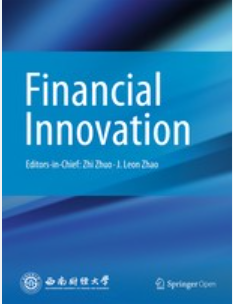评估投资组合对系统性风险的脆弱性:藤蔓共生和 APARCH-DCC 方法
IF 7.2
1区 经济学
Q1 BUSINESS, FINANCE
引用次数: 0
摘要
本研究评估了系统性风险度量--条件风险价值(CoVaR)--的敏感性和稳健性,该度量是使用藤蔓共生模型和 APARCH-DCC 模型估算的。我们计算了两种投资组合在五种分配策略下的 CoVaR。新颖的藤蔓 copula 捕捉到了复杂的依赖模式和尾部动态。APARCH DCC 包含了波动性聚类、偏斜度和峰度。结果显示,CoVaR 估计值因投资组合策略而异,加密货币投资组合的值更高。不过,与 ΔCoVaR 相比,不同策略的 CoVaR 似乎相对稳健。加密货币投资组合的整体脆弱性更大。研究结果表明,通过藤蔓共线和 APARCH-DCC 估算的 CoVaR 在评估投资组合系统性风险方面具有重要价值。这种先进的方法为加强风险管理实践提供了细致入微的见解。未来的研究可以探索 CoVaR 对不同加权方案的敏感性,如等权重投资组合与市场加权投资组合。将正态密度的 Gram-Charlier 扩展纳入 APARCH 规范,可以对残差分布进行非参数、数据驱动的拟合。此外,将 CoVaR 与另一种系统性风险度量进行比较,可以进一步了解其作为系统性风险度量的可靠性。本文章由计算机程序翻译,如有差异,请以英文原文为准。
Assessing portfolio vulnerability to systemic risk: a vine copula and APARCH-DCC approach
This study evaluates the sensitivity and robustness of the systemic risk measure, Conditional Value-at-Risk (CoVaR), estimated using the vine copula and APARCH-DCC models. We compute the CoVaR for the two portfolios across five allocation strategies. The novel vine copula captures the complex dependence patterns and tail dynamics. The APARCH DCC incorporates volatility clustering, skewness, and kurtosis. The results reveal that the CoVaR estimates vary based on portfolio strategy, with higher values for the cryptocurrency portfolio. However, CoVaR appears relatively robust across strategies compared to ΔCoVaR. The cryptocurrency portfolio has a greater overall vulnerability. The findings demonstrate the value of CoVaR estimated via the vine copula and APARCH-DCC in assessing portfolio systemic risk. This advanced approach provides nuanced insights into strengthening risk management practices. Future research could explore the sensitivity of the CoVaR to different weighting schemes, such as equal versus market-weighted portfolios. Incorporating the Gram–Charlier expansion of normal density into the APARCH specification enables a nonparametric, data-driven fitting of the residual distribution. Furthermore, comparing the CoVaR to another systemic risk measure could provide further insights into its reliability as a systemic risk measure.
求助全文
通过发布文献求助,成功后即可免费获取论文全文。
去求助
来源期刊

Financial Innovation
Economics, Econometrics and Finance-Finance
CiteScore
11.40
自引率
11.90%
发文量
95
审稿时长
5 weeks
期刊介绍:
Financial Innovation (FIN), a Springer OA journal sponsored by Southwestern University of Finance and Economics, serves as a global academic platform for sharing research findings in all aspects of financial innovation during the electronic business era. It facilitates interactions among researchers, policymakers, and practitioners, focusing on new financial instruments, technologies, markets, and institutions. Emphasizing emerging financial products enabled by disruptive technologies, FIN publishes high-quality academic and practical papers. The journal is peer-reviewed, indexed in SSCI, Scopus, Google Scholar, CNKI, CQVIP, and more.
 求助内容:
求助内容: 应助结果提醒方式:
应助结果提醒方式:


